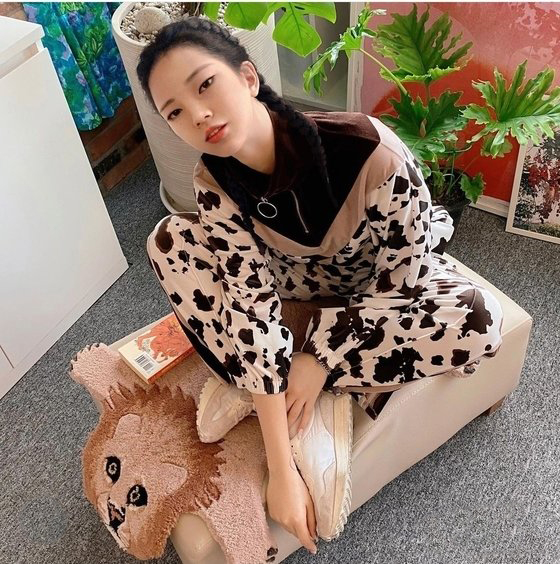On July 1st, newly established insurance company Shinhan Life ran unique advertisements for its first brand campaign. It reached 11 million views in two months after its release on Youtube, receiving an enthusiastic response from the MZ generation. What is noteworthy and surprising is that the one who dances naturally in the advertisements is a virtual influencer, not a real human. Rozy Oh is South Korea’s first virtual influencer created by Sidus Studio X using artificial intelligence (AI) technology and computer graphics. After its true identity came to light, its popularity has soared, exceeding 100k followers on Instagram. A home shopping host Lucy and a musician Rui are also gaining traction.
A Virtual influencer, as its name suggests, refers to a virtual digital people created through AI technology acting as an influencer on Instagram or YouTube. It was created for marketing purposes on social networking services (SNS) and as a substitute for human influencers. It has a real human-like appearance and specific characteristics like name, gender, age, and nationality. For example, Rozy is a 22-year-old woman who likes travel, shopping, diving, and running. Her attractive appearance was created based on the needs and preferences of MZ generations, improving her favorability. Like human influencers, virtual influencers visit existing places, make friends, meet celebrities, and collaborate with brands. They even show trendy dance skills to many people by analyzing new music and popular dances. Sharing personal daily life on your feed, they communicate steadily with followers and have a lot of influence on the MZ generation. Due to its escalating impact, they draw attention to various industries such as games, fashion, and beauty. The virtual influencer is also called a digital celebrity and plays a role in enhancing the image of a company by approaching consumers friendly.
One advantage of virtual influencers is that they can collaborate wherever they are, whenever they want to. It is possible to work in multiple spaces at once and time travel into the past and future. They don’t have to worry about social distancing and the risk of getting infected even in the lockdown situation caused by Covid 19. Since virtual influencers do not age like a real human model and are free from various rumors such as scandals, they can work long as an influencer and model. There is also a possibility of applying to Metaverse that attracts a great deal of the MZ generation’s attention these days. If the virtual influencer is combined with virtual reality (VR), there is an increase in a perceived higher level of realism with various events expanded through the Metaverse.
While the advantages of using virtual influencers are plentiful, there are disadvantages to overcome. With more virtual influencers coming out, it could hog the limelight from the real human influencers. No matter how similar their appearances are, they can be an object of aversion to people. According to the concept, uncanny valley, people tend to feel a sense of anxiety or disgust in response to virtual humans. But this can be resolved by more advanced and sophisticated technology. The real problem is their authenticity. As there is a limit to communication, it is inevitably insufficient to build trust with fans. People also expressed concern about the misuse of technology. Since a deepfake technology is used, it can replace the person in an existing image or video using AI technology. It has the potential to modify people’s memories and attitudes and implant false ones, causing fake news and misleading. To keep up with rapid technological development, we need to figure out a way to respect ethical and moral values at the same time.
For the MZ generation accustomed to using smartphones and communicating the world through them, it is not hard to accept the concept of virtual influencers. It is because it is not much different from interacting with friends through SNS without face-to-face activities. Communication and interaction are essential factors to captivate the MZ generation. Virtual influencers appeal to them with a free spirit, social personality, and unique fashion sense, even strengthening their storytelling and various episodes. They are characterized to actively participate in social issues with their huge interests in environments. It perfectly reflects the characteristic of the MZ generation that pursues individual happiness and experiences and expresses their beliefs by purchasing things with social values or special messages.
As the MZ generation represents the largest group of consumers who exert a strong influence on a digital environment, it is clear that the virtual influencer is a marketing advancement and a new attempt to break the convention. A virtual influencer is already a trend for the MZ generation. As technology advances, its influence will grow and expand to various areas in the future.
Nahyun Lee
K-UNIV Reporter




